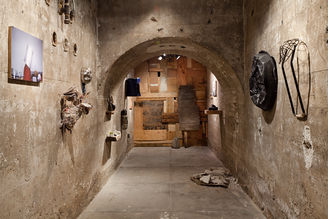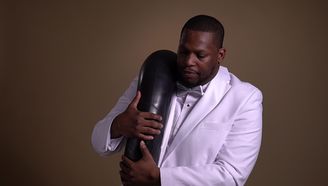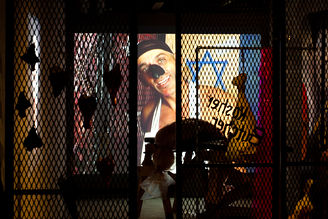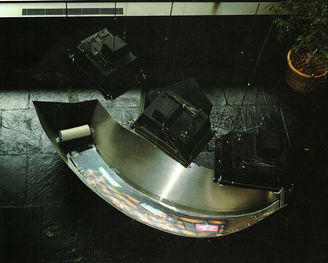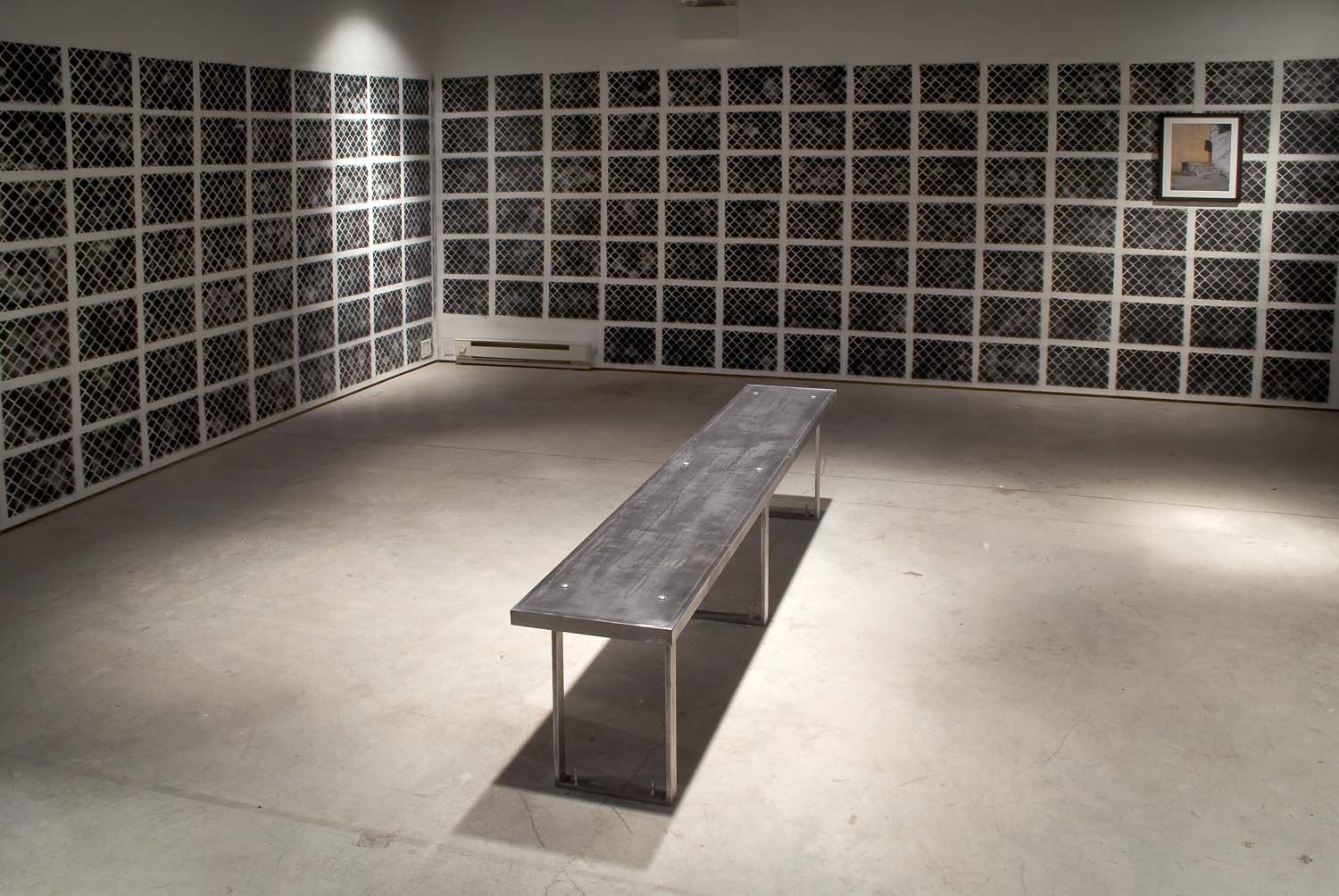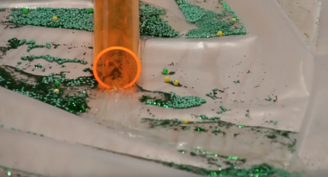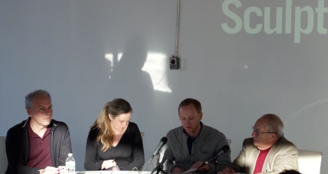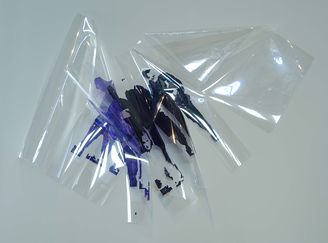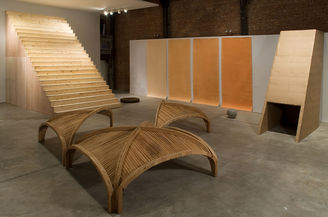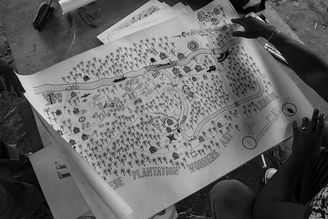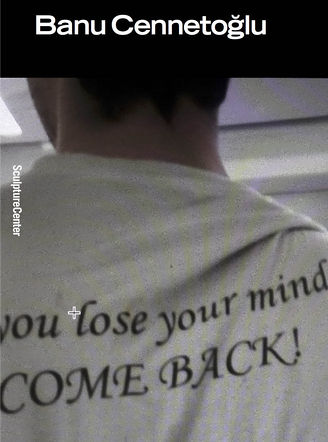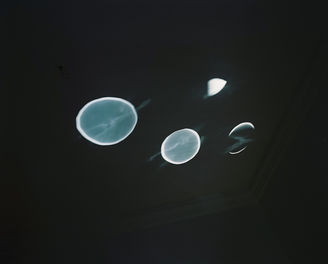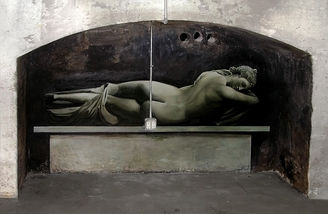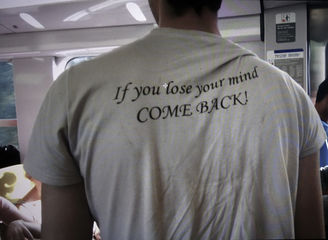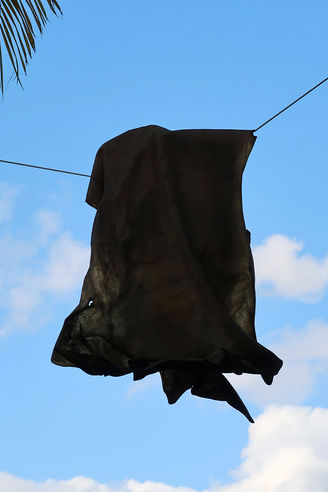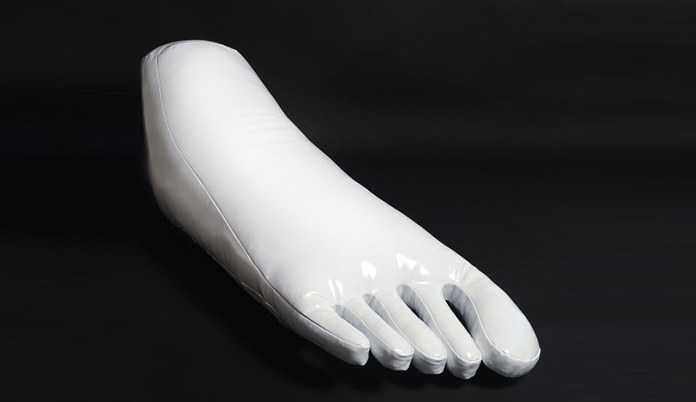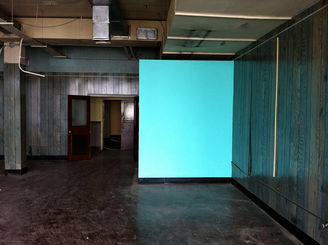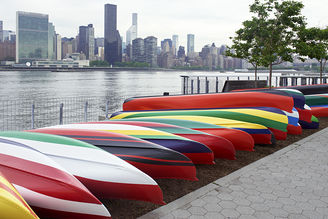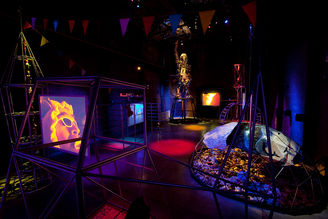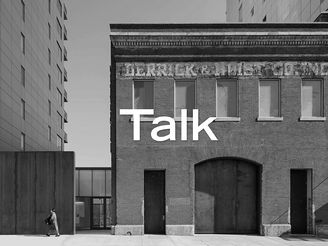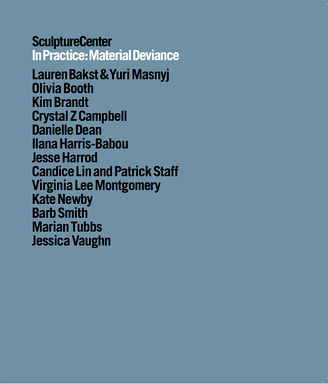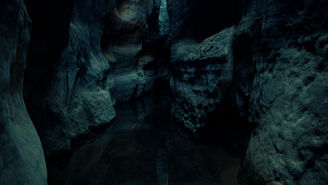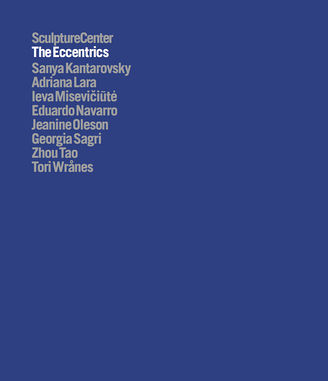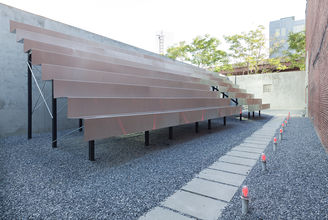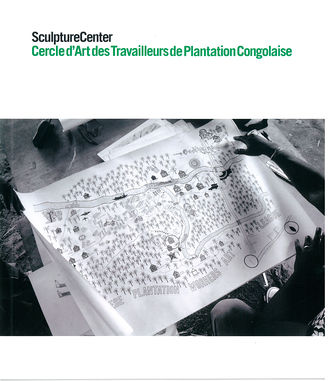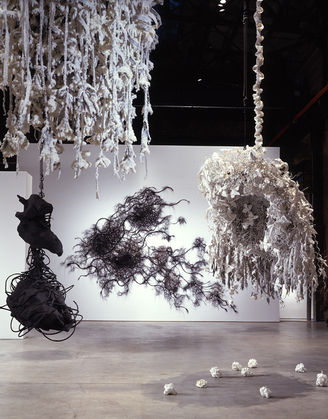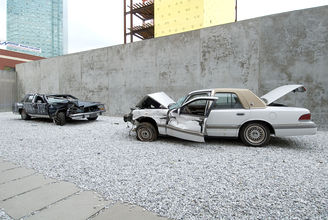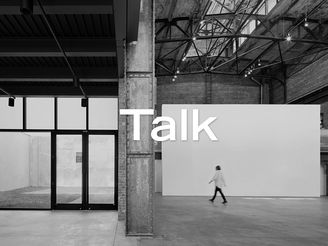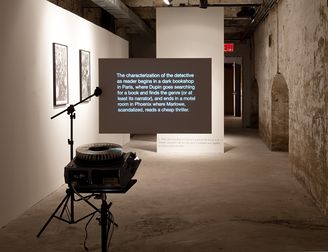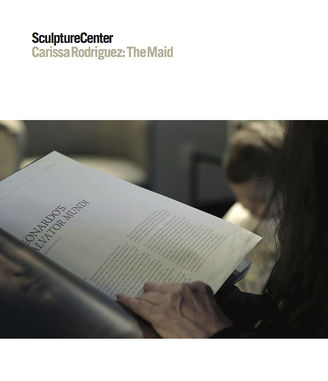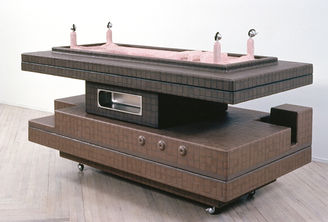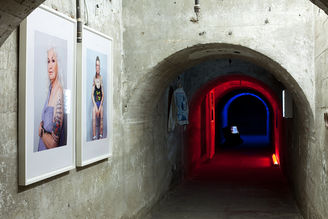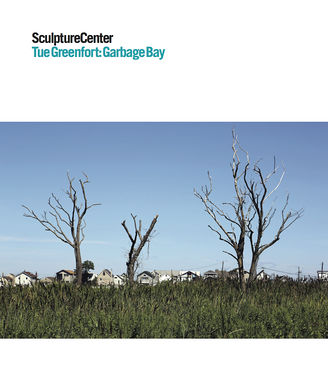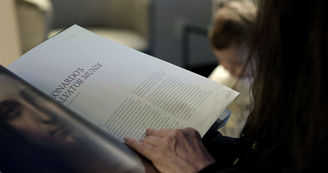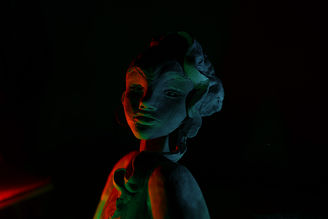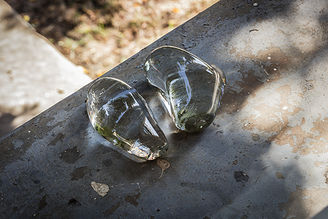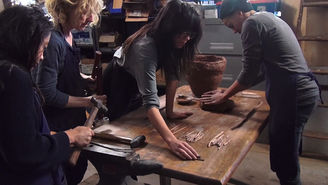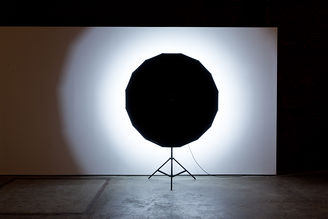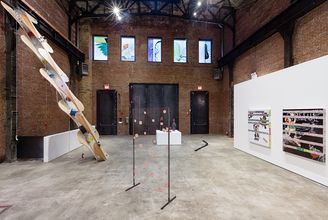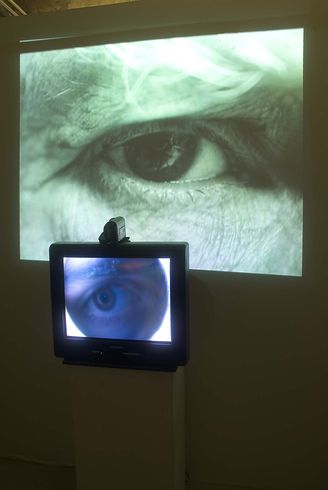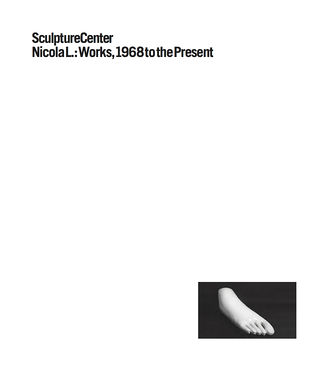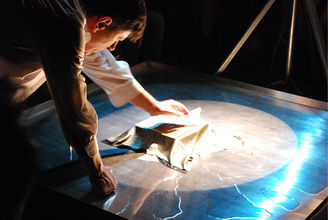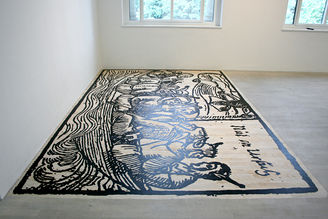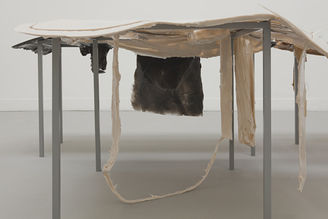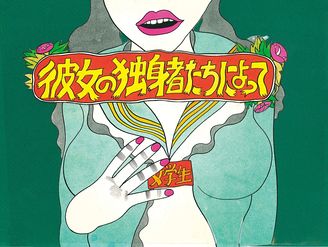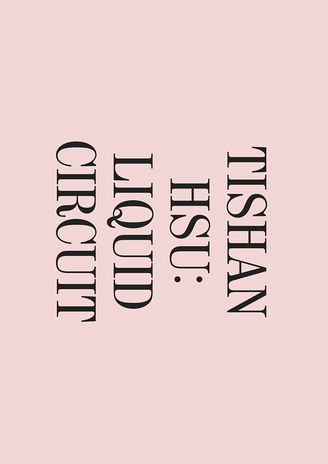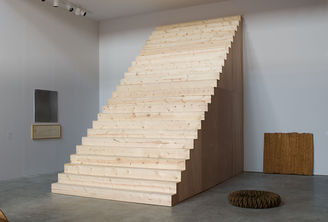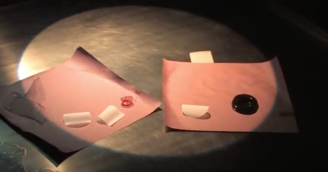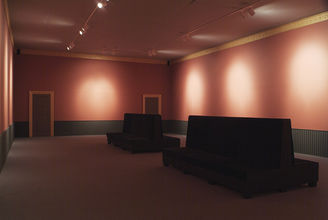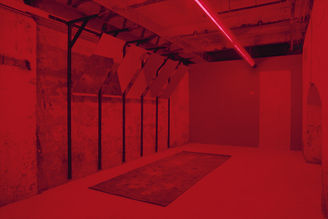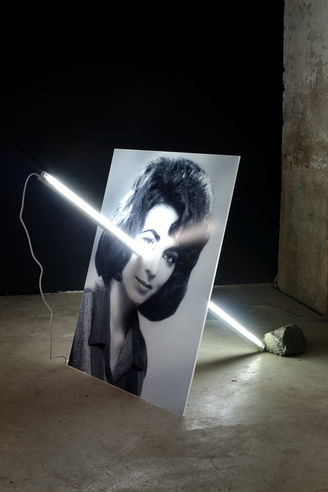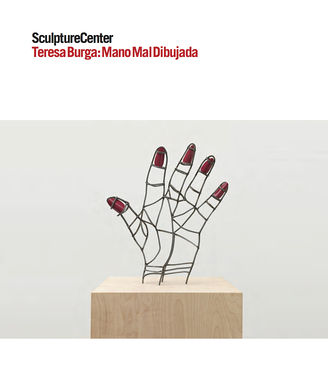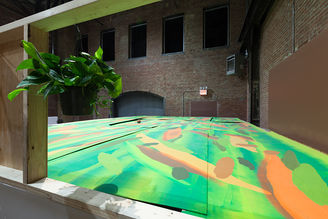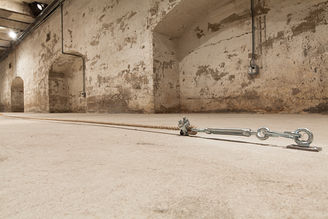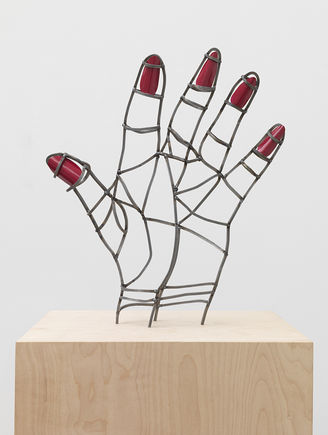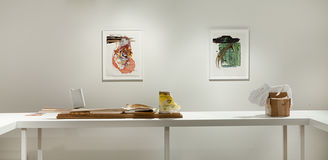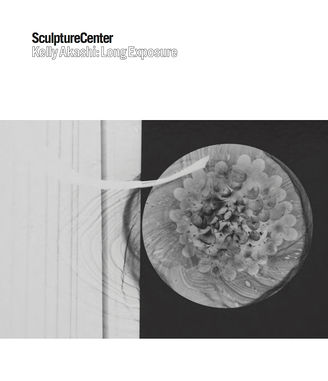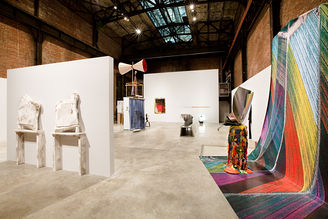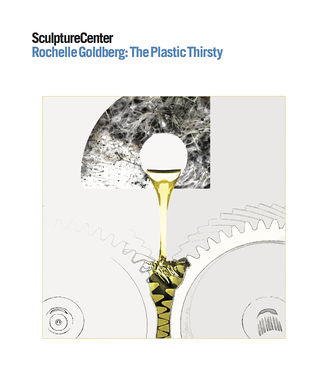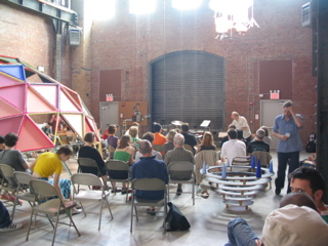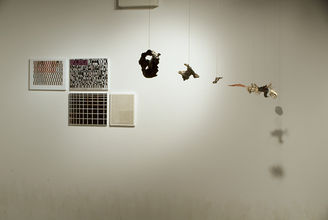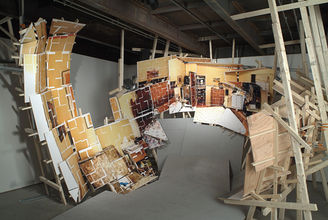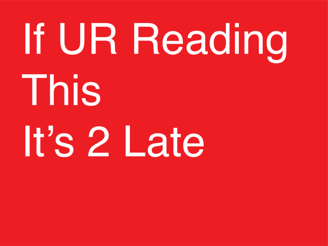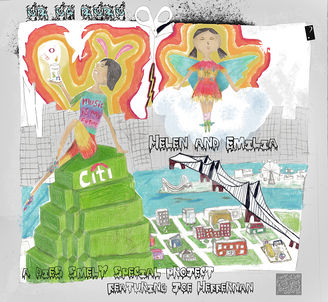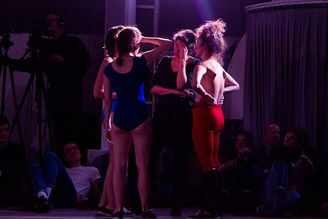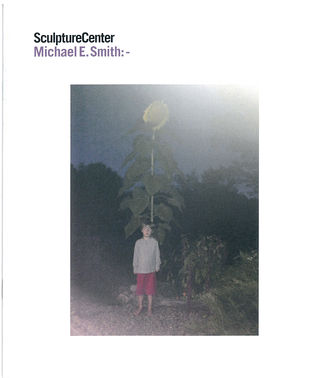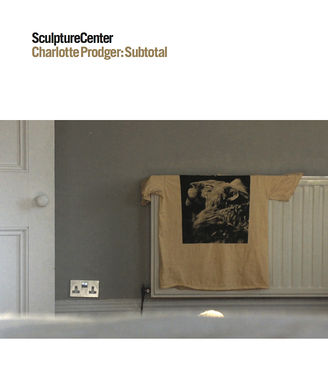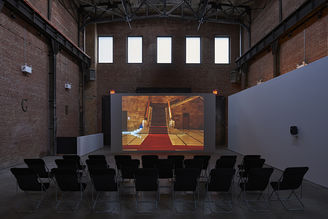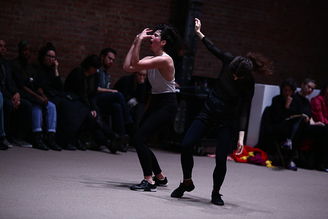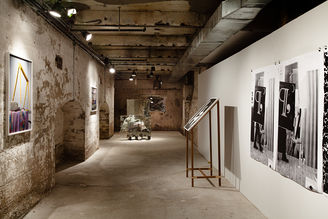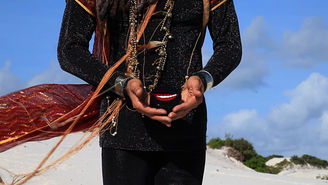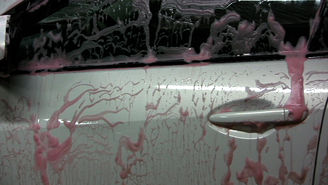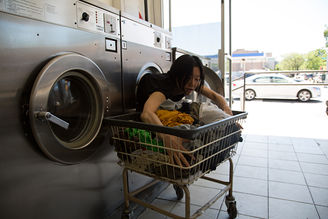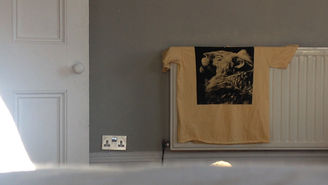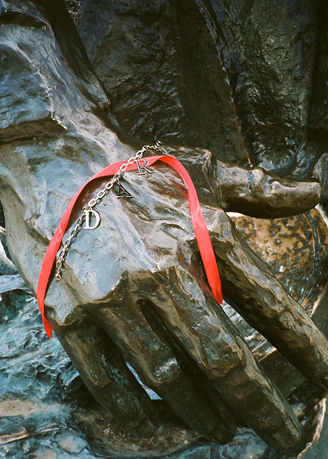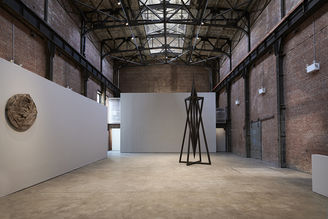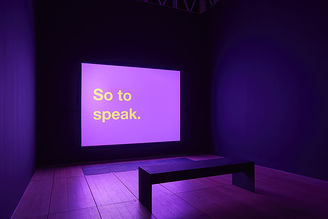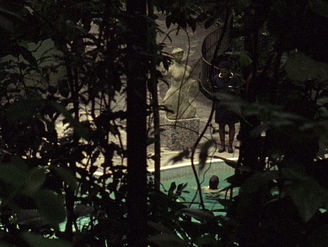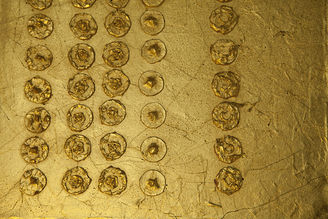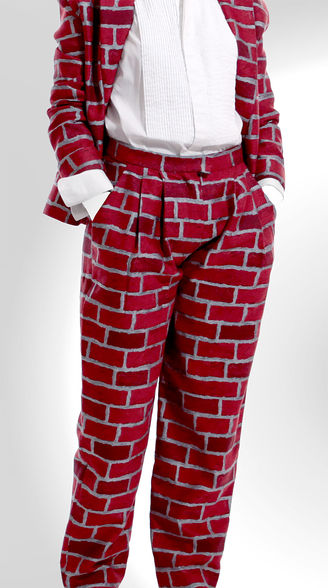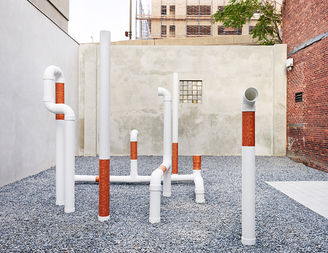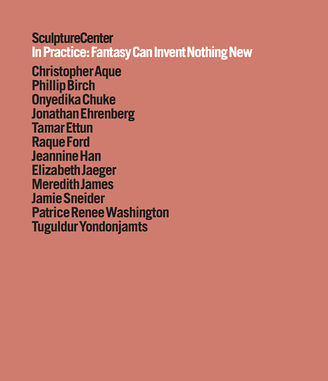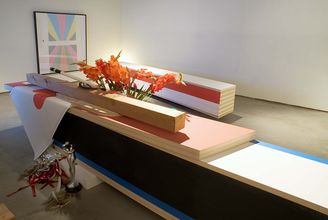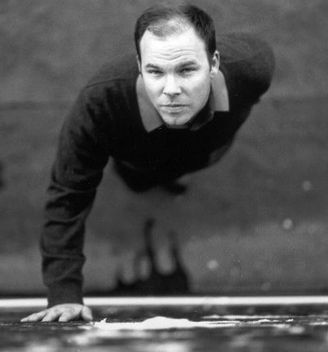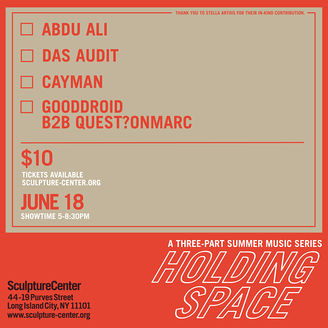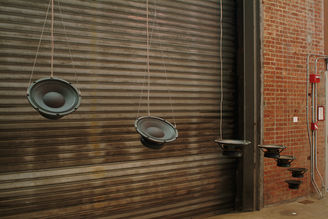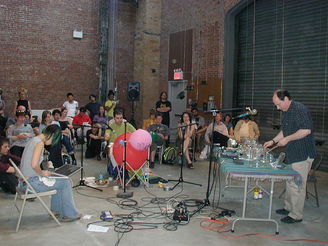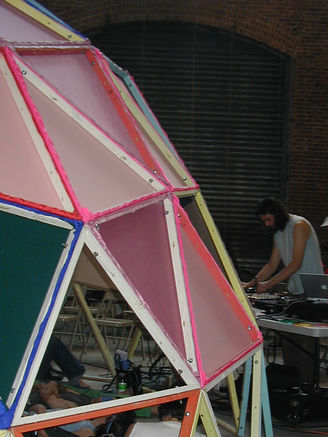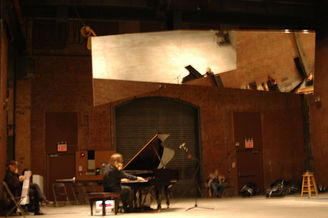74 million million million tons
74 million million million tonsApr 30–Jul 30, 2018
- Images
- Text
- Events
- Materials
- Press
- Sponsors
- Related
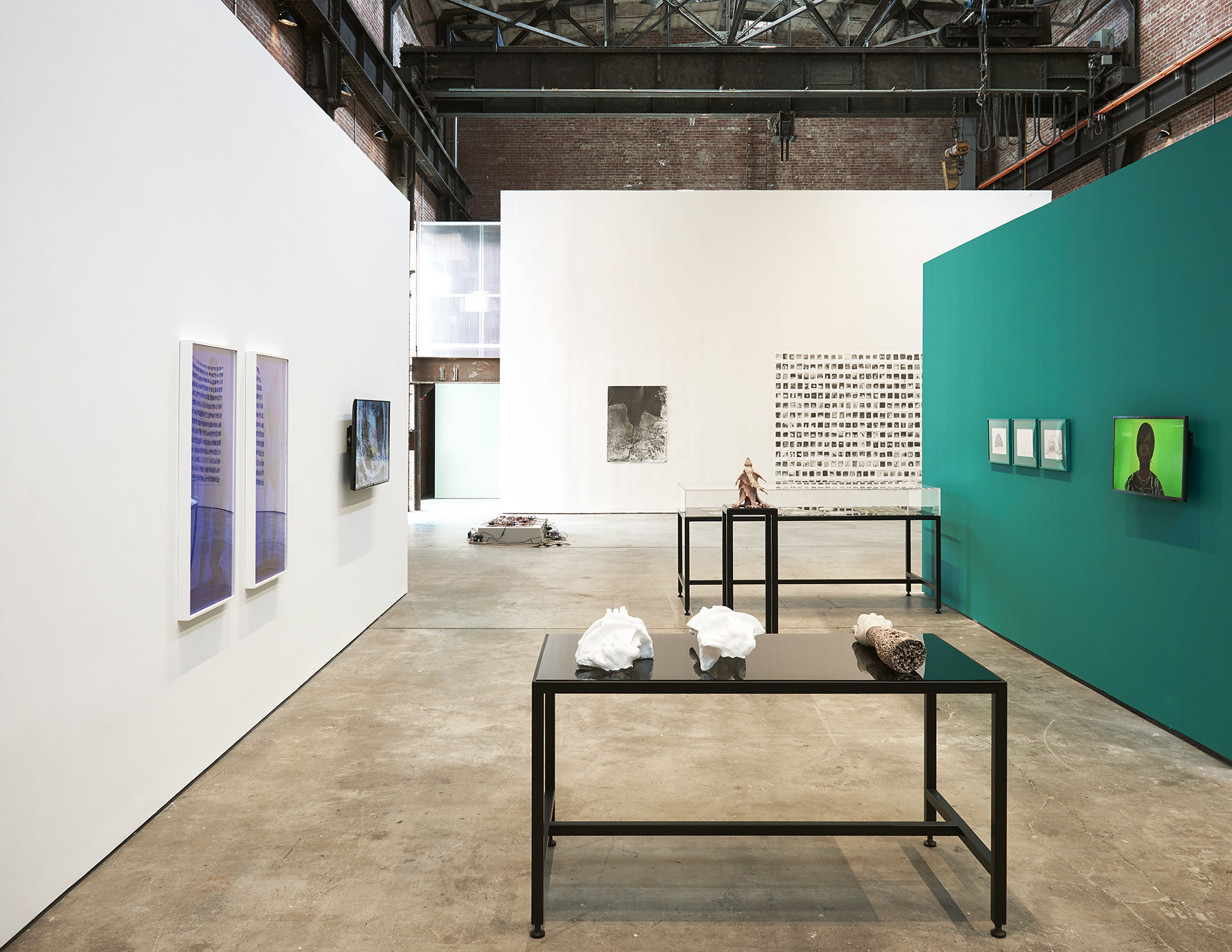
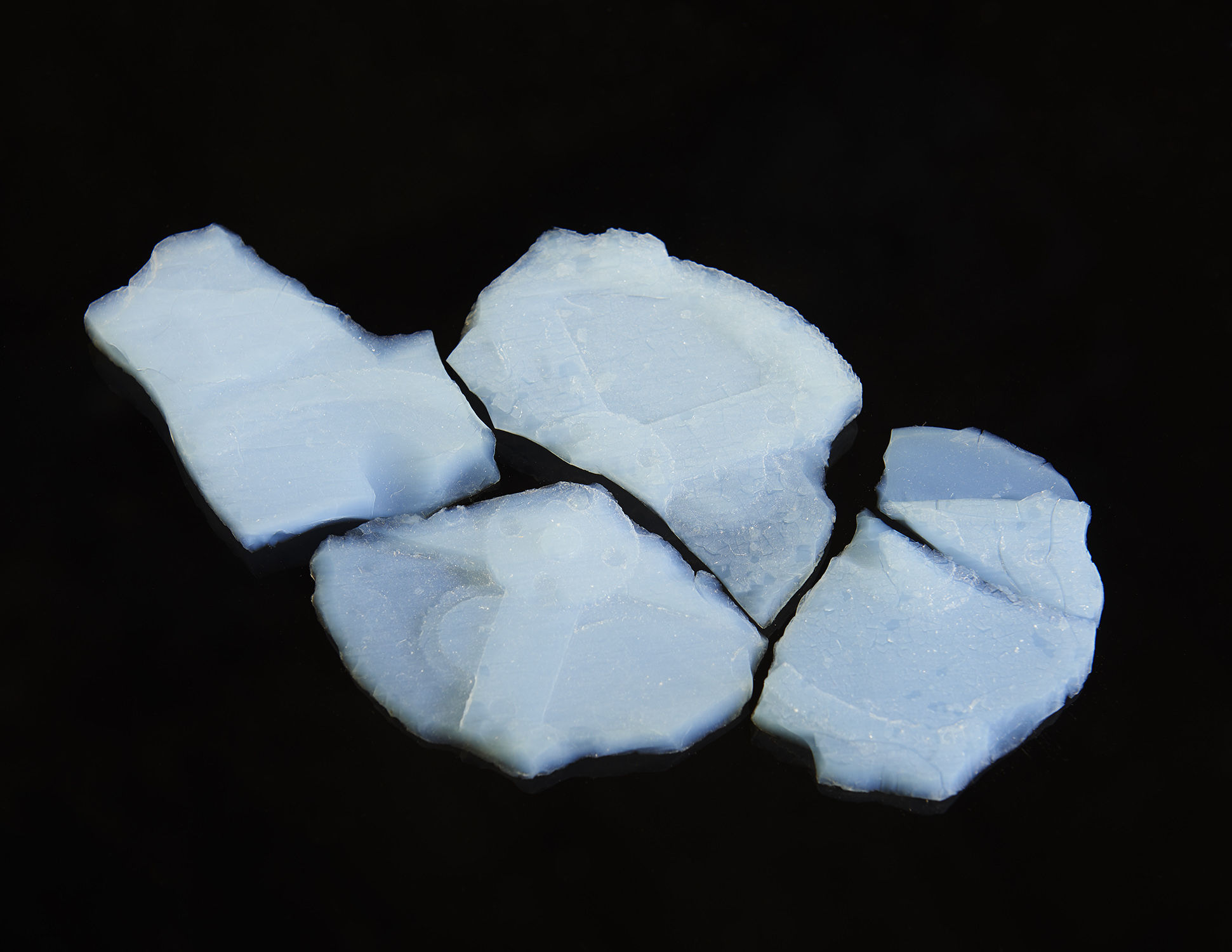
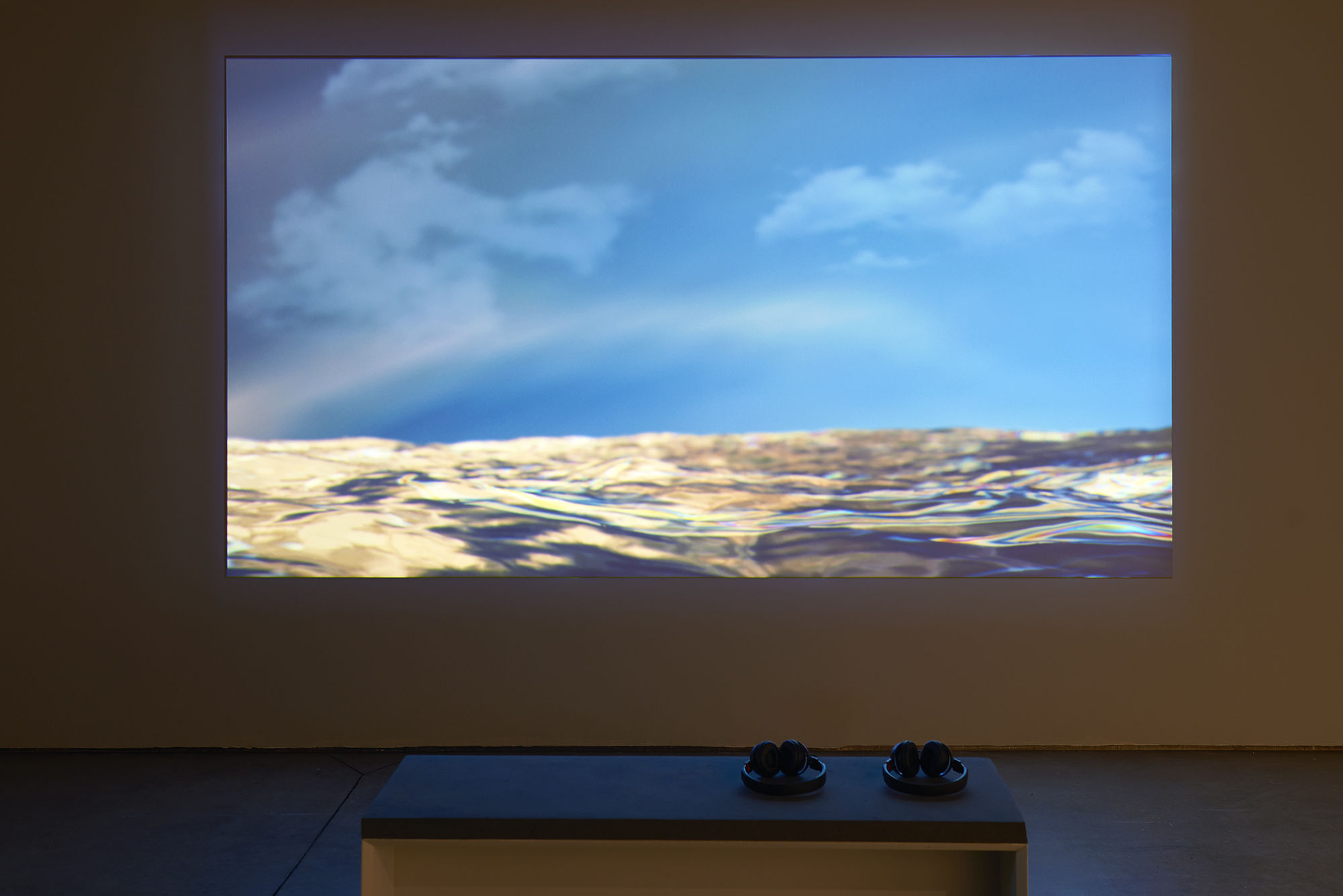
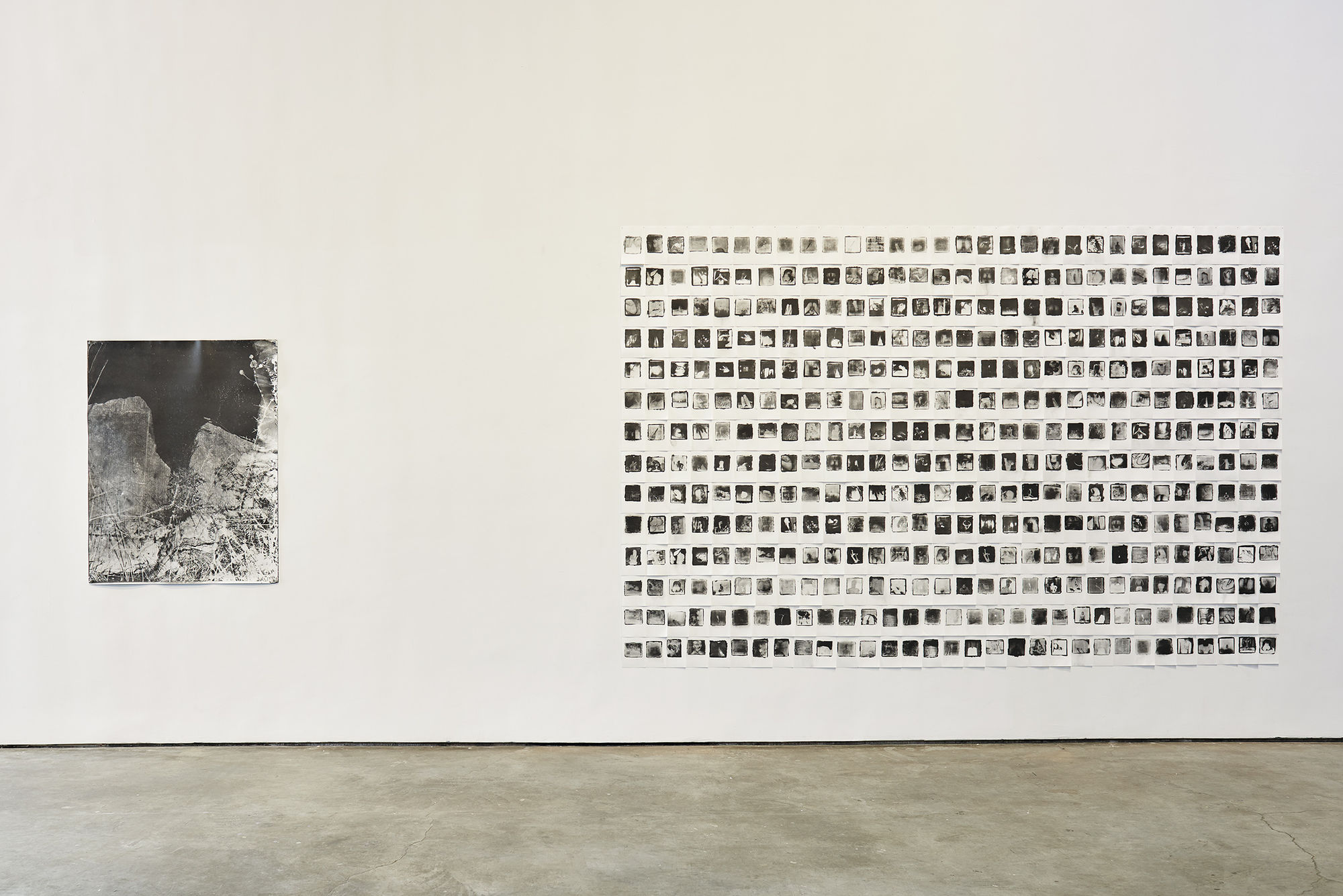
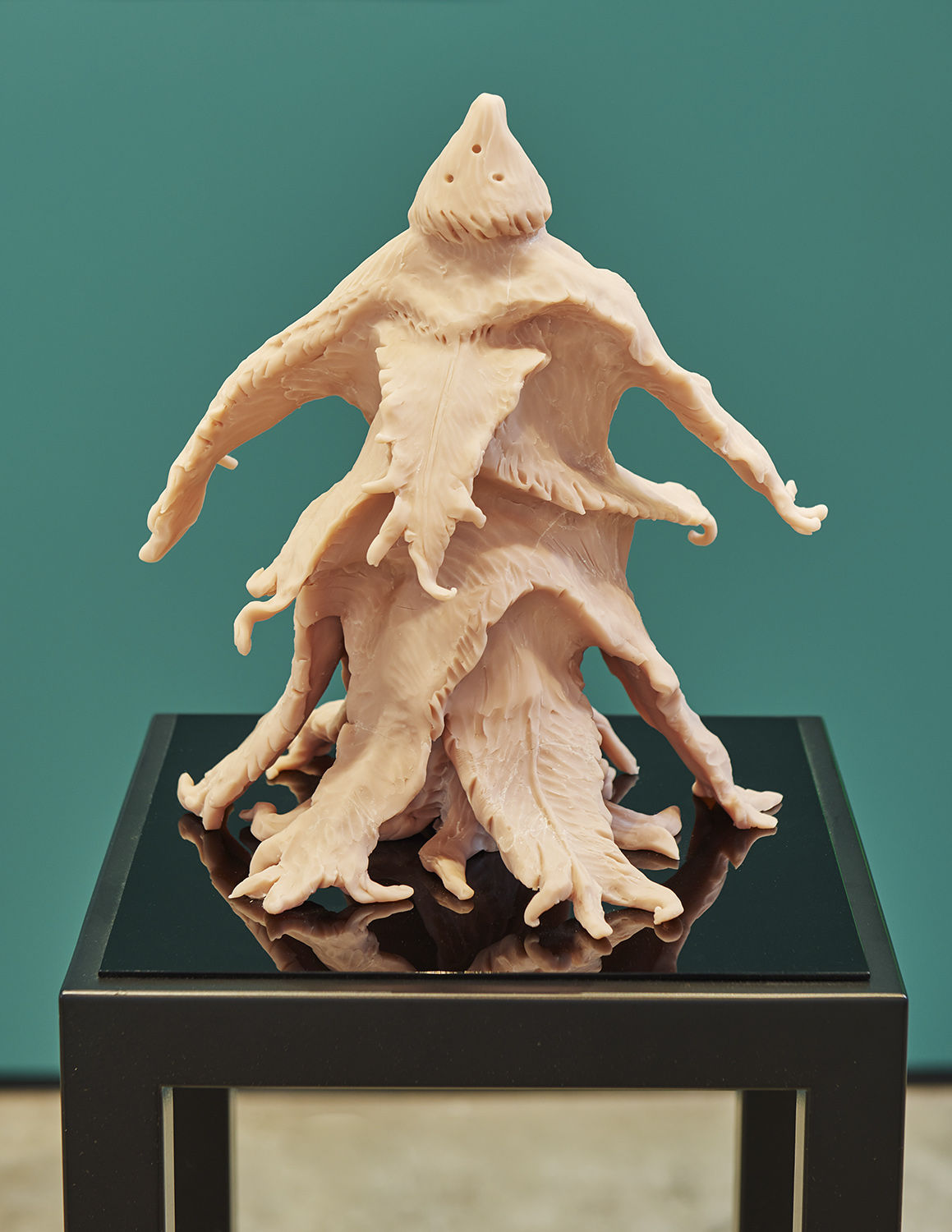
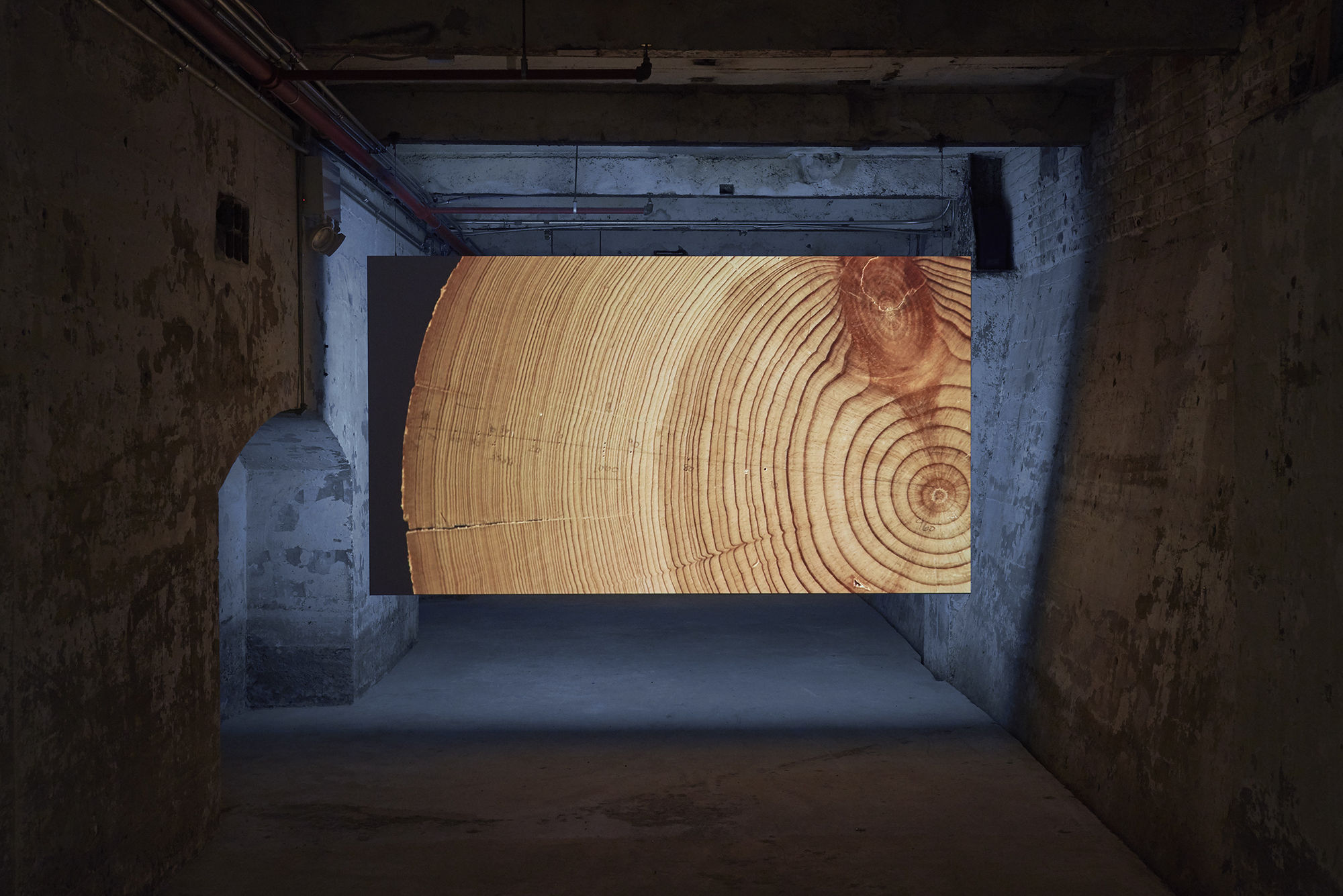
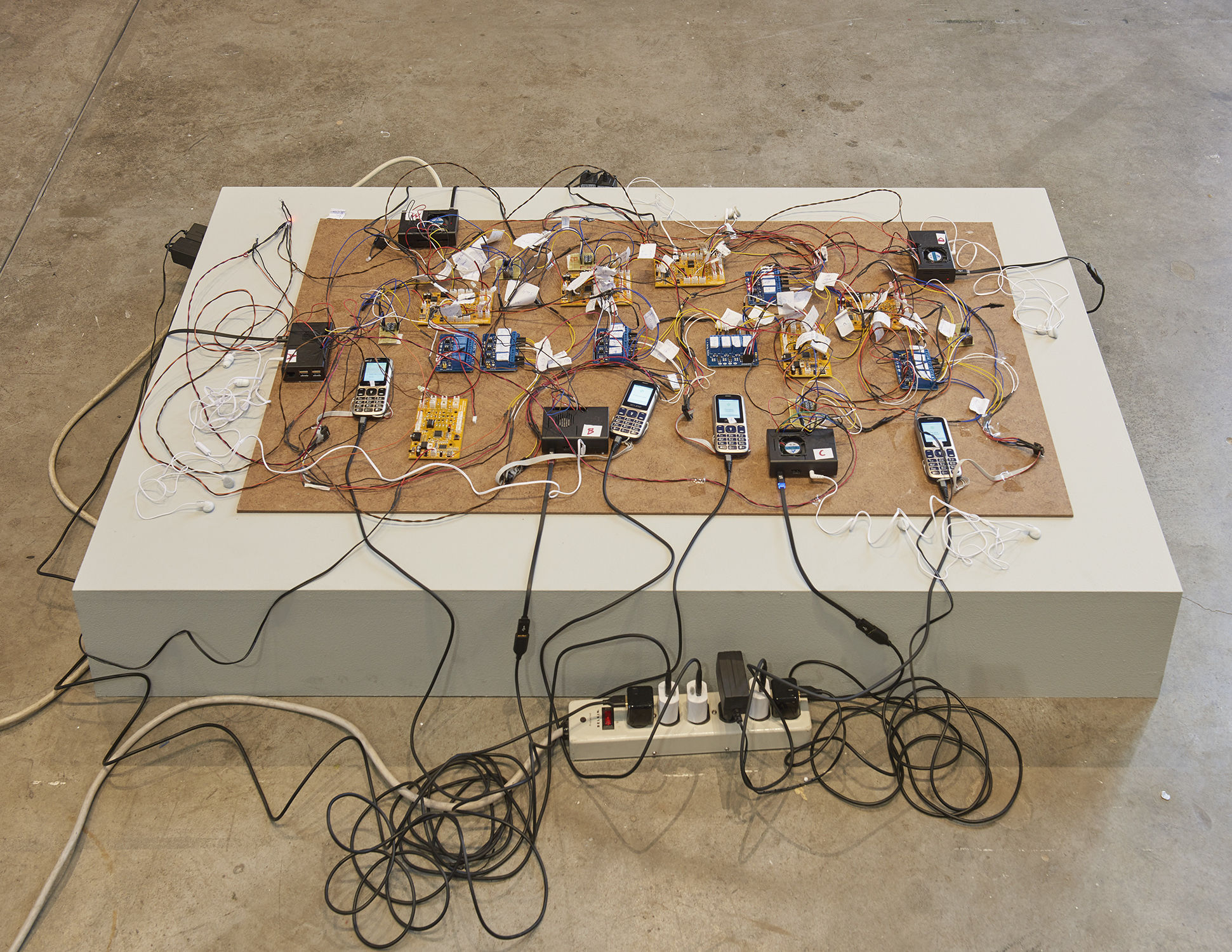
Installation view, 74 million million million tons. Photo: Kyle Knodell
74 million million million tons is an exhibition about the types of evidence that artworks can produce. Employing different methodologies to investigate, intervene, and assemble, the artists in the exhibition reveal subjects on the threshold of politics and the outskirts of legality: the robot, the refugee, the environment, the startup, and others. While their subject matter is divergent, the exhibition's artists push against narratives put forth by corporate and government industries by producing specific knowledge and corroborative objects around unmapped historical and political events. Directly intervening in the moments before such events coalesce into widely accepted narratives, they anticipate and shape understanding of a variety of human (and non-human) subjectivities by documenting and articulating instances of what is not yet widely known or recognized. By operating inside delays, silent pauses, sensory impairments, and omissions, these artists examine the shape and weigh the force of these gaps, not only as absences but also as sources of knowledge in themselves.
Shadi Habib Allah (born 1977 in Jerusalem; lives and works in New York City) presents a new work titled Did you see me this time, with your own eyes?, 2018, which consists of cell phones that replicate the mechanics of a system developed by Bedouin smugglers to communicate over 2G cellular networks while maintaining secrecy and privacy. An accompanying video depicts a team of technicians working to assemble phones that tap into the 2G system.
George Awde (born 1980 in Boston; lives and works in Beirut and Doha) makes photographic works that capture and obscure the complex conditions and relationships that lead to their production. Created mostly in Lebanon, where the artist lives, these intimate images show people in various locations embedded in covert social and sexual relationships. One series of photographs, Public Shadows, documents intimate scenes in homes and public parks that are partially obscured by the process of their making. Awde takes Polaroids in the dark, and a subsequent transfer technique using gum arabic and graphite produces a state of invisibility and darkness where his subjects' bodies reside, and where state-deemed "perversions" are forced to exist. Another untitled series of photographs comprises gelatin silver prints of digital images that Awde receives via the messaging service WhatsApp from various men he photographs and keeps in touch with. Many of these men are refugees in Lebanon, and the images constitute part of a coded and covert visual correspondence.
Carolina Fusilier's (born 1985 in Buenos Aires; lives and works in Mexico City and Buenos Aires) paintings from her ongoing series New Kind of Sun address abstracted internal spaces of mechanical objects. Researching the modes in which machines—from cars to watches—are advertised, Fusilier depicts fragments and recombinations of their inner material components using similar aesthetic techniques. Parts of the paintings are collaged details from print advertisements, however these interventions into the paintings are nearly illegible. The inclusion of discreet, relatively minor photographic material depicting portions of mechanical devices becomes a starting point for newly configured interior spaces and structures of possible machines, built with ambiguously connected windows, pipes, metal straps, and drains.
Sidsel Meineche Hansen (born 1981 in Denmark; lives and works in London) exhibits works related to her ongoing research into machine learning and surveillance technologies, investigating how advances made in pornography industries have a complex potential impact on privacy, gender, and sexuality. Hansen bought the rights to use EVA 3.0, a virtual adult lm avatar, to create a real-time virtual reality animation that sidesteps and contests the processes by which pornography, particularly on relatively new online and VR platforms, is regulated in the United Kingdom, including the recent censorship of the ways in which female orgasm can be represented.
Hiwa K (born 1975 in Sulaymaniyah, Iraqi Kurdistan; lives and works in Berlin) presents his video work A View from Above, 2017, which tells the story of an unnamed man seeking political asylum in a European country. His efforts are rewarded, after previous rejection, when he pretends to be from a particular town and inadvertently displays knowledge that is more consistent with that of immigration officials than of the people living there. In the work, K explores the bureaucratic specificity of the parameters of the "unsafe zone" as designated by officials based on ambiguous criteria. K uses the fictitious aspects of the administrations of the United Nations and governmental organizations to map the habitable and inhabitable sites in conflict zones, meanwhile uncovering the absurd fictive biographies refugees must create to receive asylum.
Nicholas Mangan (born 1979 in Victoria, Australia; lives and works in Melbourne) shows a two-channel video titled Ancient Lights, 2015, alongside a selection of collages from his related ongoing series Ancient Lights (Brilliant Errors). The work is an outcome of wide-ranging research into different figures, cosmologies, theories, and times, such as Russian biophysicist Alexander Tchijevsky's (1897-1964) chart that attempted to correlate sun spot activity in the eleven-year solar cycle with human activity. One side of the two-screen projection shows the Mexican ten-peso coin with the image of Aztec sun god Tonatiuh endlessly spinning, defying the laws of energy. The works propose a schema that elaborates how the cycles of the sun have had a role in cultural, economic, technological, and environmental events.
Sean Raspet and Nonfood (born 1981 in Washington D.C.; lives and works in Los Angeles) presents a product from Nonfood's line of algae-based foods that is available for purchase from a vending machine installed in the gallery. With algae being one of the most sustainable and nutritious food ingredients, Nonfood, the artist's Los Angeles-based startup, believes algae has considerable potential for reducing global resource consumption and carbon emissions in the food system. As a separate work, Raspet also presents the "Nonfrut" flavor formulations he composed for the product installed in three plastic containers. Embedded in aesthetic and economic structures characteristic of contemporary entrepreneurialism, wellness, and performance, Raspet offers a different model for the role of the artist: his work finds its form in the proposal and creation of products and what could constitute the sustainable flavors and foods of the future.
Susan Schuppli (lives and works in London) introduces a new series of works related to the 2010 Deepwater Horizon oil spill in the Gulf of Mexico that considers modes of image production and representation of the disaster by examining its documentation from multiple sources. Thinking through the luminescent and spectral colours of an oil spill as a form of natural cinema, her work asks if polluted environments can operate as vast photosensitive arrays that register and record the changes brought about by industrialization and its contaminating processes. By combining of official and publicly-sourced images and analyzing the contrast between manmade and natural visual records, Schuppli generates new information concerning the event.
Daniel R. Small (born 1984 in Centralia, Illinois; lives and works in Los Angeles) displays a group of new works that consider the mechanisms around human interventions into the concept of time, bringing new immortality movements and modern technological advances together with ancient devices and premodern ideas about animism. As part of his museological installation, Small has interviewed Bina48, an android replica of Bina Aspen made by Hanson Robotics for her partner, Dr. Martine Rothblatt, founder of the Terasem Movement Foundation, which proposes that one person's consciousness may be transferred to another biological or technological form. In the interview, Bina48 speaks to her condition as a robot that is learning to be more human and that will conceivably live forever. Small places this interview in relation to casts made to look like fragments from the Antikythera Mechanism in Aerogel, a lightweight translucent material used to insulate spacecraft machinery. The Antikythera Mechanism, discovered in a shipwreck off of a Greek island dating from 60 BC, has been hailed an "ancient computer" that could predict astronomical events. Other parts of the installation look at different factions of the transhumanist thought. In a video titled Terasem Teyolía, Small includes footage taken from the computer servers of members of the Transhumanist Movement, who upload all their memories to be broadcast into space with the intention that they will someday be retrieved and used. An example of this practice is represented in the drawings of Russian Transhumanist Alexey Turchin, also included in the installation, which Turchin makes when hooked up to an EEG (electroencephalogram), a device he uses to preserve measurements of his brainwaves to be input into a future android. Small reads the drawings as animist images, giving human-like life to a non-human entity, and interprets a tree-like "Wood Spirit" in three-dimensional sculptural form that emulates models used in animation studios. Terasem Teyolía also includes footage of the Otomi Ceremonial Center in Mexico, where extinct and endangered animals have been rendered as topiary bushes. "Teyolía" refers to one of three independent souls in Otomi tradition. In this case, it is the "soul of the heart," an integral entity in Aztec, Otomi, and other contemporary indigenous belief systems, that leaves the body and transcends to the afterlife after death.
Hong-Kai Wang (born 1971 in Huwei, Taiwan; lives and works in Vienna and Taipei) presents a sound piece that emerged from workshops with Taiwanese farmers in which the participants attempted to reproduce "The Sugar Cane Song," a long-forgotten song written by workers during Japan's colonial rule of Taiwan. The group reconstruction of the song is an attempt to access the suppressed and disappeared history of the anti-colonial uprising of the workers in 1925. The recollection of the song's melody and lyrics is a process of what the artist calls "clairaudience"—the sonic version of clairvoyance.
74 million million million tons is curated by Ruba Katrib and Lawrence Abu Hamdan and is accompanied by a color publication.
Events
Sponsors
74 million million million tons is supported in part by a grant from the Danish Arts Foundation.
SculptureCenter's exhibition, program, and operating support is generously provided by grants from the Lambent Foundation Fund of Tides Foundation; the Kraus Family Foundation; the A. Woodner Fund; Jeanne Donovan Fisher; the Seth Sprague Educational and Charitable Foundation; New York City Council Majority Leader Jimmy Van Bramer; and contributions from our Board of Trustees and Director's Circle. Strategic planning support is provided by the Milton and Sally Avery Arts Foundation and contributions from many generous individuals.
SculptureCenter's programming is supported, in part, by public funds from the New York City Department of Cultural Affairs in partnership with the City Council, an award from the National Endowment for the Arts, and made possible by the New York State Council on the Arts with the support of Governor Andrew M. Cuomo and the New York State Legislature.






